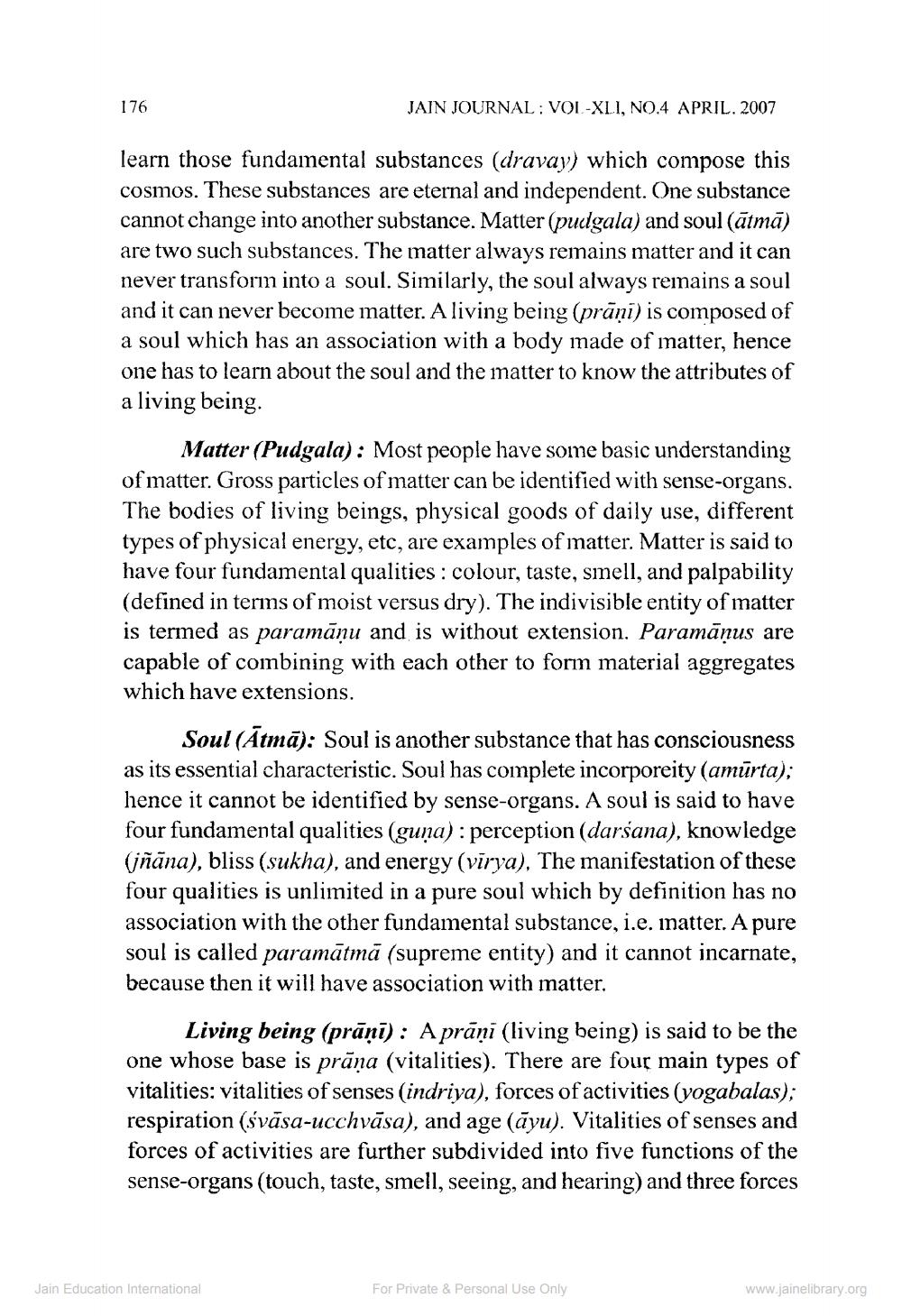Book Title: Jain Journal 2007 04 Author(s): Jain Bhawan Publication Publisher: Jain Bhawan Publication View full book textPage 7
________________ 176 JAIN JOURNAL VOL-XLI, NO.4 APRIL. 2007 learn those fundamental substances (dravay) which compose this cosmos. These substances are eternal and independent. One substance cannot change into another substance. Matter (pudgala) and soul (ātmā) are two such substances. The matter always remains matter and it can never transform into a soul. Similarly, the soul always remains a soul and it can never become matter. A living being (prāṇī) is composed of a soul which has an association with a body made of matter, hence one has to learn about the soul and the matter to know the attributes of a living being. Matter (Pudgala): Most people have some basic understanding of matter. Gross particles of matter can be identified with sense-organs. The bodies of living beings, physical goods of daily use, different types of physical energy, etc, are examples of matter. Matter is said to have four fundamental qualities: colour, taste, smell, and palpability (defined in terms of moist versus dry). The indivisible entity of matter is termed as paramāņu and is without extension. Paramāņus are capable of combining with each other to form material aggregates which have extensions. Soul (Atmā): Soul is another substance that has consciousness as its essential characteristic. Soul has complete incorporeity (amūrta); hence it cannot be identified by sense-organs. A soul is said to have four fundamental qualities (guna): perception (darsana), knowledge (jñāna), bliss (sukha), and energy (virya), The manifestation of these four qualities is unlimited in a pure soul which by definition has no association with the other fundamental substance, i.e. matter. A pure soul is called paramātmā (supreme entity) and it cannot incarnate, because then it will have association with matter. Living being (prāņī): A prāṇī (living being) is said to be the one whose base is prāņa (vitalities). There are four main types of vitalities: vitalities of senses (indriya), forces of activities (vogabalas); respiration (śvāsa-ucchvāsa), and age (ayu). Vitalities of senses and forces of activities are further subdivided into five functions of the sense-organs (touch, taste, smell, seeing, and hearing) and three forces Jain Education International For Private & Personal Use Only www.jainelibrary.orgPage Navigation
1 ... 5 6 7 8 9 10 11 12 13 14 15 16 17 18 19 20 21 22 23 24 25 26 27 28 29 30 31 32 33 34 35 36 37 38 39 40 41 42 43 44 45 46 47 48 49 50 51 52 53 54 55 56 57 58
